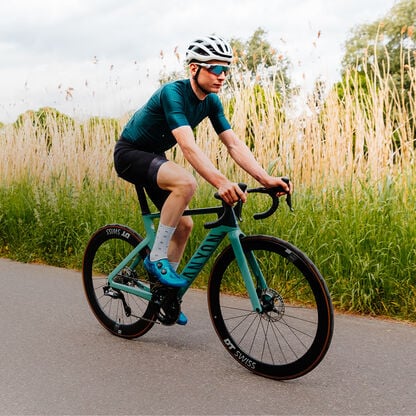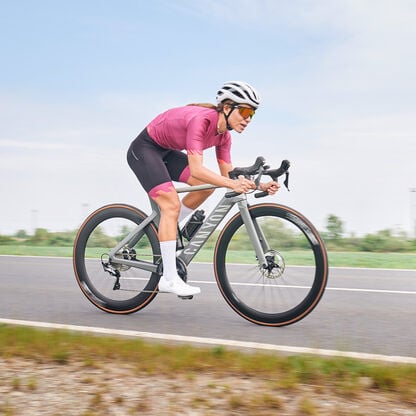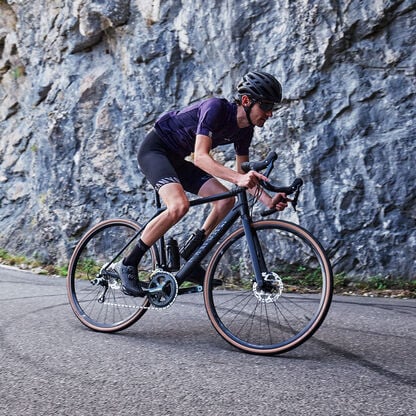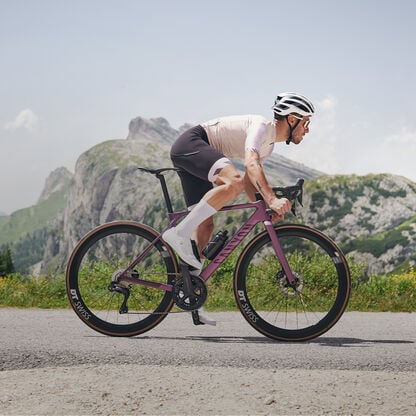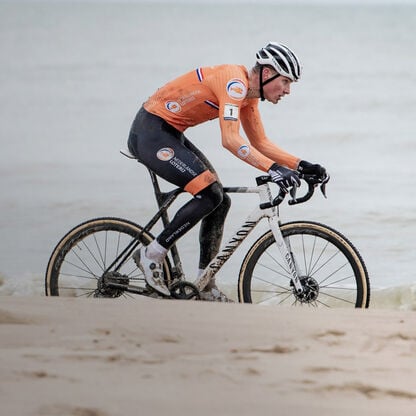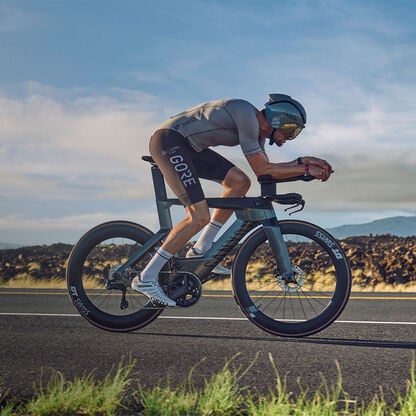Aero vs. Endurance vs. Lightweight road bikes: Which one should you choose?
Canyon makes some of the best road bikes in the world (just ask world champion Mathieu Van Der Poel), but with three incredible options – the Ultimate, Endurace, and Aeroad – how do you choose the best for you?


Finding the right Canyon road bike for you has never been easier. The Endurace flies over the pavement while keeping you more upright and comfortable. The Canyon Ultimate feels as fast on the climbs as it does in the middle of a crowded bunch sprint toward the finish line. The Aeroad slices through the wind like a hot knife through butter.
But sometimes, riders might be torn between models. After all, there’s nothing wrong with wanting it all! Here’s what prospective buyers should know before hitting the “Add to cart” button.
Contents
Geometry and frame differences
The way a bike handles is determined mainly by its geometry. The main numbers you need to pay attention to are the bike’s stack and reach. The bigger the stack – the vertical height from the bottom bracket to the head tube – the more upright your riding position. A longer reach – the horizontal distance between the center of the bottom bracket and the head tube – equals a more aerodynamic riding position.
Both the Ultimate and Aeroad are straight up racing machines, featuring more aggressive geometry than the Endurace, which is an incredibly fast road bike, but designed more for all-day comfort and stability. There was a time (not too long ago, in fact) that the geometry differences between these three bikes would be fairly dramatic. But using feedback from professional riders like Tour de France green jersey winner Jasper Philipsen, Canyon engineers relaxed the aggressive positioning of the Aeroad, giving it a slightly more relaxed pedaling position. After all, it’s hard to go fast when you’re not comfortable.
When looking at the SLX 8 Ultegra Di2 versions of all three models in a size medium, the two key numbers are the same between the Ultimate and Aeroad. Both the Ultimate and Aeroad have the same stack height (560mm) and reach (393mm), as well as the same chainstay (410mm) and wheelbase (988mm) lengths. (Shorter chainstays help a bike feel twitchier and more responsive.) The Aeroad has a slightly longer top tube, meaning riders will be stretched out ever so slightly more, putting them in a bit more of an aerodynamic pedaling position, but it’s doubtful they’ll notice much of a difference between the two when riding them.
Conversely, the Endurace’s stack height is 590 mm, 30mm higher than the other two models, while the reach (378 mm) is shorter, making for a more relaxed ride. The longer chainstays (415mm) and wheelbase (993mm) of the Endurace add to its stability.
Tyres and tyre clearance distinctions
The Endurace comes stock with 32mm tyres, but can accept tyres as wide as 35mm. Both the Ultimate and Aeroad come with 28mm tyres, although they can accept tyres as wide as 33mm and 31mm, respectively. So what does that mean in real-life terms?
The Endurace can better tackle a wide variety of terrain. The wider tyres add stability and, at lower air pressures, a bit more comfort. While a gravel-specific model like the Grail is best for that particular surface, the Endurace will hold its own on occasional forays onto rocky, washboard roads. Although Mathieu Van Der Poel won the famed Paris-Roubaix race on an Aeroad this year, rough, cobblestone-laden roads are not typically where the Aeroad and Ultimate truly shine.

Performance comparison: Aerodynamics and speed performance
More aerodynamic means more speed. The Aeroad was designed to absolutely slice through the wind, making it one of the fastest bicycles both in the pro peloton and the real world. The more aerodynamic tubes used on the Aeroad will save riders 7.4 watts at 28mph (45kph) compared to previous generations of that model. However, that means the rider will need to ride at that speed or faster to reach those savings. The more aerodynamic tubes do come at a slight weight penalty; depending on the model, the Aeroad weighs about a pound more than the Ultimate.
The tubes on both the Ultimate and Endurace have an aero profile, albeit less pronounced than the Aeroad. With every new generation, Canyon engineers have found new ways to tweak the frames in order to optimize their aero profile. Even the Ultimate’s seatpost has been redesigned to keep drag to an absolute minimum. Despite its more upright riding position, the Endurace ranks as one of the fastest road bikes currently on the market.
All three models offer internal cable routing to further reduce drag.
Comfort and riding experience on different surfaces
Neither the Ultimate nor Aeroad models offer a suspension seatpost, but several Endurace models, such as the CF 8 Di2, boasts the unique S15 VCLS 2.0 seatpost, giving riders 20mm of vertical deflection while in the saddle. Basically, the carbon leaf spring construction feels firm while riding on flat roads, but absorbs the bumps and jolts when going over rough pavement. The Endurace’s wider, plusher tyres also adds a little bit of extra comfort that helps during long-ride days.

Gear compatibility: Components and accessories for each bike
Most Canyon accessories such as the carbon bottle cage can be used interchangeably between models. Models with the CEP integrated cockpit can purchase an integrated Garmin mount that’s more aerodynamic than other aftermarket options.
Endurace models offer a few more storage options, like the top-tube storage snake for higher-end models and the attachable bag that mounts to the top tube on less expensive carbon-fiber and aluminum models.
Maintenance and durability: Long-term considerations
Canyon creates all three models with the best materials and components for their various price points. The higher-end bikes feature the finest carbon fiber available, giving them class-leading stiffness-to-weight ratio. Frames are reinforced at their stress points to reduce flex and fatigue.
When it comes to maintenance needs, you won’t find too many differences between the three models. Keep them clean and their chains waxed, you’ll avoid most major headaches.

Conclusion: Choosing the right bike for your needs
So what type of rider are you? If your idea of pedaling nirvana involves a marathon ride over rough country roads, start your search on the Endurace page. Speed-focused racers trying to decide between the Canyon Ultimate and the Aeroad may face a bit more of a dilemma, but luckily there’s no wrong answer: both are exceptional racing bikes that will help you rack up criterium victories or Strava KOM/QOMs. The Ultimate may have an advantage if you live in a hilly or mountainous area, while the Aeroad may be slightly better suited for flatter roads.
For more detailed information on each of the models, or if you have additional questions, be sure to check out our bike comparison tool. Just hit the link to the tool at the bottom of the page, and you can choose up to two other models to analyze components, geometry, and more. If you still can’t decide, try taking them for a test ride at one of Canyon’s demo centers such as the one in Carlsbad, California and test ride centers in Europe.
Luckily, if you feel like you’d be happier on a different model after a few rides, you can easily exchange your purchase, thanks to Canyon’s generous 30-day return policy.
Discover our Road Bikes
Did this article help?
Thank you for your feedback
-
 About the author
About the authorRobert Annis
Robert Annis is an award-winning outdoor-travel journalist. As an experienced writer and sport enthusiast he writes content that is inspiring with focus on road biking. You might have read Robert's articles in Bicycling, National Geographic, Outside, Travel + Leisure, Inside Hook, AARP, Midwest Living, Sierra, Hemispheres, Departures, Lonely Planet, Afar, Los Angeles Times, Chicago Tribune, RV Magazine, and Hidden Compass.
